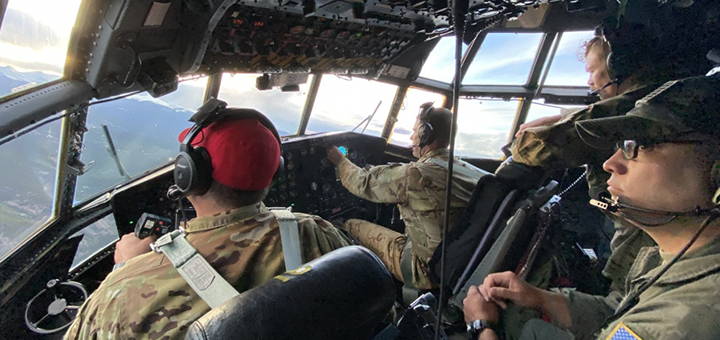Other News Releases
Military aircraft equipped with Modular Airborne Firefighting Systems (MAFFS) mobilized to assist with wildfire suppression efforts
Media Contacts:
NIFC: Stanton Florea, 208-387-5437, [email protected]
AFNORTH: Lt Col Karen Roganov, 850-774-1044, [email protected]
Boise, Idaho., Sept. 9, 2022 – The USDA Forest Service is activating two Department of Defense C-130 aircraft equipped with MAFFS to assist with increased fire activity in several western states. The aircraft, from the California Air National Guard’s 146th Airlift Wing and the Nevada Air National Guard’s 152nd Airlift Wing, will join the USDA Forest Service and other wildland fire agencies fighting wildfires across the West. The aircraft will be reporting to the Boise Airtanker Base today.
“We greatly appreciate the assistance of our military partners,” said Kim Christensen, deputy assistant director for operations for the USDA Forest Service. “These aircraft will help provide additional capacity for aerial firefighting.”
Having military C-130s that can be converted into airtankers provides a critical “surge” capability that can be used to bolster wildfire suppression efforts when commercial airtankers are fully committed or not readily available.
"We take to heart our team's effort to help protect property and critical infrastructure, with the ultimate goal of saving lives," said Lt. Gen. Kirk Pierce, commander, First Air Force - Air Forces Northern (AFNORTH). "Our MAFFS-trained team of professionals completed rigorous annual aerial wildland firefighting training in April with the USDA Forest Service to ensure they were fully prepared for the wildfire season."
First Air Force - (AFNORTH) headquartered at Tyndall AFB, Fla., U.S. Northern Command's Air Component Command, is the DoD's operational lead for the aerial wildland firefighting military efforts. The team is committed to excellence through training and interagency relationships.
The C-130 aircraft are equipped with the U.S. Forest Service’s MAFFS, which can drop up to 3,000 gallons of fire retardant in less than 10 seconds across a quarter-mile line. The system slides into the back of the military aircraft, and retardant is released through a nozzle on the rear left side. In addition to the 146th and 152nd Airlift Wings, MAFFS program aircraft are from the Air Force Reserve Command’s 302nd Airlift Wing, Peterson AFB, Colorado and the Air National Guard’s 153rd Airlift Wing, Cheyenne, Wyoming.
On September 6, the National Wildland Fire Preparedness Level was elevated to 4 (out of 5), indicating increased wildland fire activity across the U.S. The level was raised by the Multi-Agency Coordination Group (NMAC), composed of wildland fire representatives from each wildland fire agency based at the National Interagency Fire Center (NIFC) in Boise, Idaho.
NIFC is the nation's support center for wildland firefighting. Eight different agencies and organizations are part of NIFC including, the Bureau of Land Management, Bureau of Indian Affairs, U.S. Fish and Wildlife Service, National Park Service, U.S. Forest Service, National Weather Service, U.S. Fire Administration, and the National Association of State Foresters.
For more information on Modular Airborne Firefighting Systems, visit: https://www.fs.usda.gov/managing-land/fire/planes/maffs.
For background photos and videos of the MAFFS program, visit: www.dvidshub.net/feature/MAFFSAEG.









